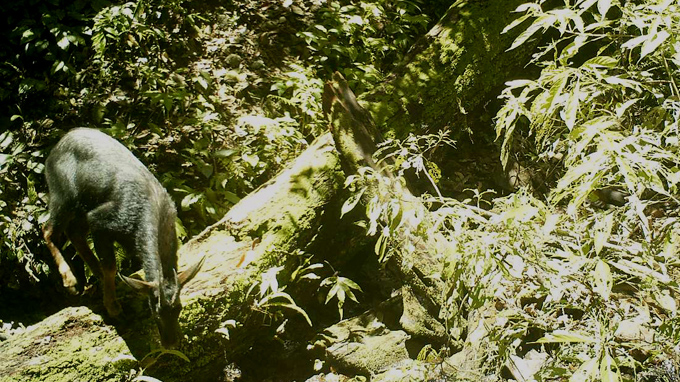Collecting “vat” (land leech) samples and analyzing their blood and DNA is one of the innovative methods being adopted to help staff in Bach Ma National Park learn about the presence and locations of rare animals in the jungles along the Vietnam – Laos border in central Thua Thien-Hue and Quang Nam provinces for more effective conservation of the species.
The innovative collection of land leeches and analysis of DNA, conducted in Thua Thien Hue and Quang Nam, helps determine the presence of the animals in those areas. This approach focuses on the areas which the species under study are likely to inhibit and expand in other locations under the patrol routes of forest rangers.
The approach, which is transferred to the local sanctuary staff by foreign experts, is based on the scientific principle that the blood of the rare animals under study, which is sucked by leeches, is retained inside the leeches for up to three months.
So far, out of the 647 blood samples from 19,000 leeches collected in Thua Thien - Hue and Quang Nam provinces, 75 have been sent to the Kunming Institute of Zoology (China) and Frankfurt University Germany for analysis.
The initial DNA analysis revealed the presence of important species such as wild boar (Sus scrofa), chamois (Capricornis sumatraensis), mink (Melogale moschata), “Truong Son muntjac (Muntiacus truongsonensis), and red-bellied squirrel (Dremomys rufigenis).
Apart from leech collecting, local sanctuary staff has also adopted other methods including installing 10 bird singing recording device at the mountain peaks, using directional microphones MKE 300, and Sony IC recorders to record the animals’ activity in the early morning.
The initial recordings show that a large number of white-cheeked black gibbons are present in the monitored areas of the reserve in Thua Thien – Hue and Quang Nam as well as Bach Ma National Park. Based on the result, the rangers are conducting further analysis on their number and herd structures.
In addition, bird song recording also confirms the presence of several native, rare species of pheasants.
Camera trapping, another method, also records the presence of striped rabbits (Nesolagus timminsi), muntjac (Muntiacus muntjak), red-faced monkeys (Macaca arctoides), long-tailed monkeys (Macaca fascicularis) and pangolins (Manis javanica).
The innovative methods are part of a project put on by the World Wide Fund For Nature (WWF) in the Mekong region from 2011 to 2014. The project focuses on the extensive research on the carbon stock and forest biodiversity conservation and aims to monitor indicators of zoological diversity in the Thua Thien - Hue and Quang Nam jungles.





















































